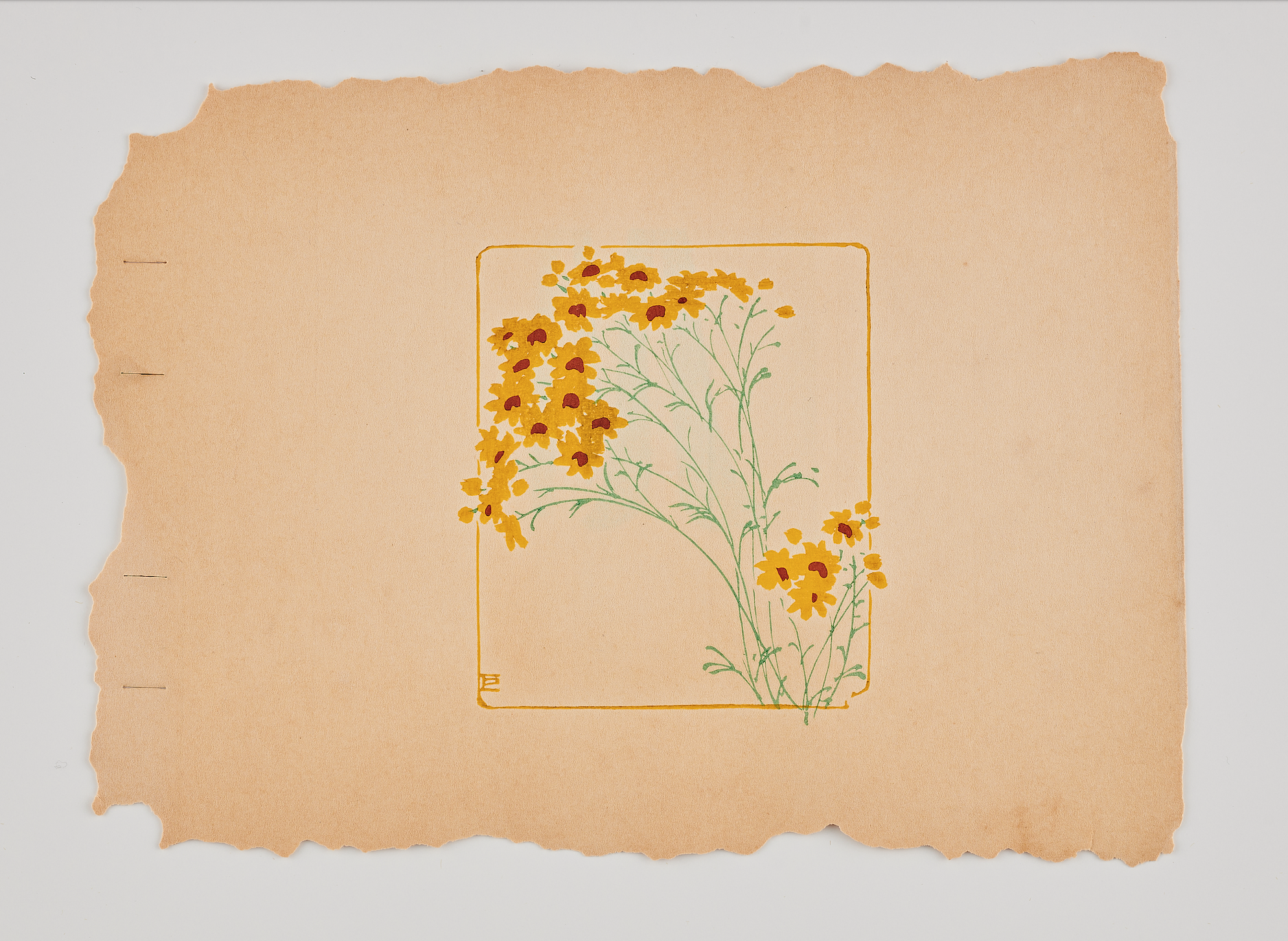“Japanese Kerria” [山吹 Yamabuki] woodblock print by Kyosen Kawasaki
Title : “Japanese Kerria” [山吹 Yamabuki]
Excerpt from “Collection of small works 図案小品集”, Book 1
Year: 1911
Woodblock print, ink on paper
Print size: 19 × 26cm
With passe-partout: 21 x 29.7cm
Title : “Japanese Kerria” [山吹 Yamabuki]
Excerpt from “Collection of small works 図案小品集”, Book 1
Year: 1911
Woodblock print, ink on paper
Print size: 19 × 26cm
With passe-partout: 21 x 29.7cm
Title : “Japanese Kerria” [山吹 Yamabuki]
Excerpt from “Collection of small works 図案小品集”, Book 1
Year: 1911
Woodblock print, ink on paper
Print size: 19 × 26cm
With passe-partout: 21 x 29.7cm
Yamabuki is a spring flower which has been celebrated in Japan since ancient times. It is mentioned in the Manyoshu, the oldest anthology of Japanese poetry. The Japanese name "Yamabuki" is said to be derived from "Yamaburi" (meaning "mountain swing”) due to its slender, flexible branches swaying in the wind. According to the legend, a gold coin dropped at the bottom of a valley and turned into a yamabuki flower, becoming a symbol of "good fortune” for Japanese people.



